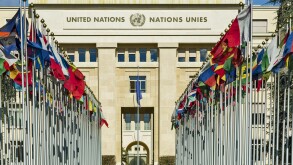The Canada Revenue Agency (CRA) continues to pursue persons and/or companies that are not reporting income. In simple language, the underground or cash economy is a growing problem and one that our revenue authorities would like to stop. At the same time, transfer pricing and the targeting of large successful companies is still preoccupying revenue personnel. It is more common to see new transfer pricing audits arise in the non-traditional areas such as consumer products and finance. There is a clear and ever-present effort to examine the more common areas such as companies operating in the technology, pharmaceutical and automotive sectors. The CRA continues to clamp down on what it considers sham transactions and the persons involved in the promotion and/or marketing of tax plans or tax shelters. Finally, those persons with overseas accounts that have failed to avail themselves of the voluntary disclosure programme are now being subject to audit and worse. For some persons, the situation is financially bleak. In short, like other western democracies, the Canadian government is facing a serious revenue challenge and methods such as clamping down on companies and/or persons that fail to comply with the Income Tax Act appears to be a more focused activity by the CRA.
In search of an anti-treaty abuse policy
Combatting treaty abuse has always been at the forefront of Canada's efforts in the international tax arena. Over the course of the last two decades, Canada has attempted to address treaty abuse through a variety of rules, including a proposed anti-treaty shopping rule, the general anti-avoidance rule (GAAR), and the concept of beneficial ownership. However, the rate of success has been severely limited and taxpayers have generally prevailed on most of these issues. Canada has recently renewed its focus in this area through limitation on benefits provisions in some of its tax treaties.
Canadian tax treaties do not traditionally contain a dedicated limitation on benefits article. The sole exception to this rule is the Canada-US Income Tax Convention, the Fifth Protocol to which introduced Canada's first ever comprehensive limitation on benefits article. The limitation on benefits article to this treaty (article XXIX-A) denies the benefits of the treaty to all but qualifying persons unless two specific tests in article XXIX-A(3) or (4) are met. The impact of this article in the Canadian context is largely untested but Canada has not indicated that it intends to insert similarly comprehensive limitation on benefits articles in any other tax treaty.
Nevertheless, newer Canadian tax treaties may contain more anti-abuse or specific limitation on benefits provisions than previous iterations or older treaties. The Canada-Hong Kong Income Tax Convention (the HK Treaty) is a case in point. Signed in November 2012 and in force since late 2013, this treaty contains a number of anti-abuse provisions that have been hitherto unknown in the scope in Canadian tax treaties. For example, each of articles 10 (dividends), 11 (interest) and 12 (royalties) of the HK Treaty contains a specific anti-avoidance provision stating that a resident of a party (the term 'contracting state' is not used in the context of Hong Kong) will not be entitled to any benefits provided under the relevant article if one of the main purposes of any person concerned with an assignment or transfer of the dividend, interest, or royalty, as the case may be, or with the creation, assignment, acquisition or transfer of the shares, the debt-claim, or other rights in respect of which the dividend or interest royalty is paid, or with the establishment, acquisition or maintenance of the person that is the beneficial owner of the dividend, interest or royalty, is to obtain the benefits of the relevant article. Generally, this provision prevents an artificial attempt to obtain the benefit of article 10, 11 or 12, as the case may be, through an assignment or transfer of the income, the assignment, acquisition of transfer of the income-producing property, or the establishment, acquisition or maintenance of the beneficial owner of the income.
The anti-avoidance rule noted above may be found in some Canadian tax treaties, for example, the Canada-UK Income Tax Convention (the UK Treaty). However, the version of the provision in the HK Treaty has been substantially expanded beyond the version in the UK Treaty, which only refers to the creation or assignment of the shares, debt-claim, or the right in respect of which the royalties are paid, as the case may be. Other newer treaties negotiated contemporaneously with the HK Treaty, notably those with Serbia and Poland, do not contain provisions with the enlarged scope of the provisions in the HK Treaty.
The reason for the expanded scope of the anti-abuse provisions in articles 10, 11 and 12 of the HK Treaty is unclear. Similarly, Canada's preferred mechanism for combating what it perceives as treaty abuse is also unclear. Over the course of the last two years, Canada has attempted broader anti-abuse provisions but not in all treaties, ignored any efforts to include a comprehensive limitation on benefits article in its treaties, proposed and created the framework for an anti-treaty shopping rule and also shelved its plans to enact such a rule. Until Canada provides some clarity in this regard, its aims to combat perceived treaty abuse will continue to remain directionless.
Treatment of capital gains
Like many jurisdictions, Canada taxes capital gains. Capital gains are generally taxed when the property is sold. The tax rate varies from province-to-province, and typically ranges between 20% and 25%. Capital gains treatment is generally preferable in Canada, as capital gains are subjected to considerably lower tax rates than ordinary income (for example, employment or business income) or dividends.
The lower tax rate for capital gains, in turn, naturally leads to behaviours whereby taxpayers attempt to obtain capital gains treatment in respect of the disposition of property. There are indeed many court cases in Canada in which the taxpayer and Minister of National Revenue have disputed whether a particular disposition was on account of income (and fully taxable) or on account of capital (and only effectively half-taxable). Conversely, there is an incentive to characterise a loss as being on account of income, because business losses generally obtain better treatment that capital losses, and, indeed, court cases exist vis-à-vis the nature of losses.
There are additional tax incentives available in Canada with respect to capital gains that can eliminate or further reduce the tax burden associated with the sale of capital properties. In the 1980s, Canada's parliament introduced a capital gains exemption which has increased in fits and starts to its present figure of C$813,600 ($620,000) (and has recently been indexed for inflation). This can amount to a little over $200,000 in tax savings per taxpayer. Certain techniques exist to multiply the capital gains exemption by increasing the number of taxpayers who can benefit from the exemption in relation to a particular transaction.
The capital gains exemption generally applies to the sale of shares of a small business. There are a number of technical tests which such shares must meet to qualify for the exemption. For instance, the business in question must be Canadian controlled, and most of the undertakings of the business cannot be of a passive nature, such as rents or royalties.
Finally, there is an expanded exemption for dispositions of property in respect of two of Canada's major primary sectors, fishing and farming. It is presently $1,000,000. This exemption for farm or fishing property requires, in general terms, that the owner (or spouse, parent, or child) had farming or fishing as her or his primary source of income for at least two years. This exemption also applies to sales of shares of a farm or fishing corporation provided, as with any of the tax incentives discussed, that the technical requirements of the Income Tax Act are satisfied.

|

|

|
|
David Chodikoff, |









